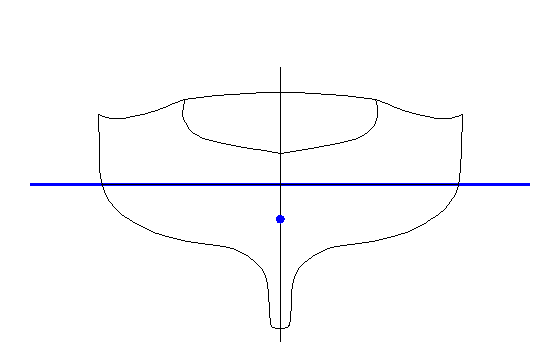I strongly disagree with planing hull, 1. planing hull becomes very Stabil crossing the frame rate of about 3 knots, NT wobbles increasingly, if alto should be on the long side. 2. planing hull will only start to function properly 22 knots this size vessels, NT loses stability when driving 18 knots, I have this experience when surfing wave at about 20 knots, but the hull does not act with such speed rises due to excess water, the hull works best with up to 15 knots, . I know what I am talking about the old boat was the same size fly bridge max speed of 36 knots, the comparison is easy because the time in the same waters comparable to the same weather.
AT vs NT (I have never seen a live AT. because there seem to be imported from Europe?)
the initial stability is certainly better than AT wider because only two of the GZ-curve comparison of open up at the end. Width can bring faster acceleration roll movement vs narrower, this of course depends on how the weight is distributed from the center line. I have already stated on several occasions why the manufacturers can not publish openly Stability information about the boats that sell?
Another very interesting comparison would be to see the stability of the facts SD vs FD hull. Here there are so many opinions and a long tradition that it would be nice to compare. Manufacturers should be more transparent with respect to these matters, why Stability data is encrypted? all commercial vessels, regardless of the size found on board the stability of the documents, because the captain may change and a new captain has to be able to know what the ship can you reach up and how it behaves at sea, in theory, by knowing these the captain can plan your trip safe for people, cargo and the ship, simple as that.
Can someone give me a US concept of coastal cruising, whether it's roads distance from the coast or travel distance to the point a to b, or all boating which does not exceed oceans, or the other?


 Unfortunately, my head is certainly a pea when I could not find an answer
Unfortunately, my head is certainly a pea when I could not find an answer
